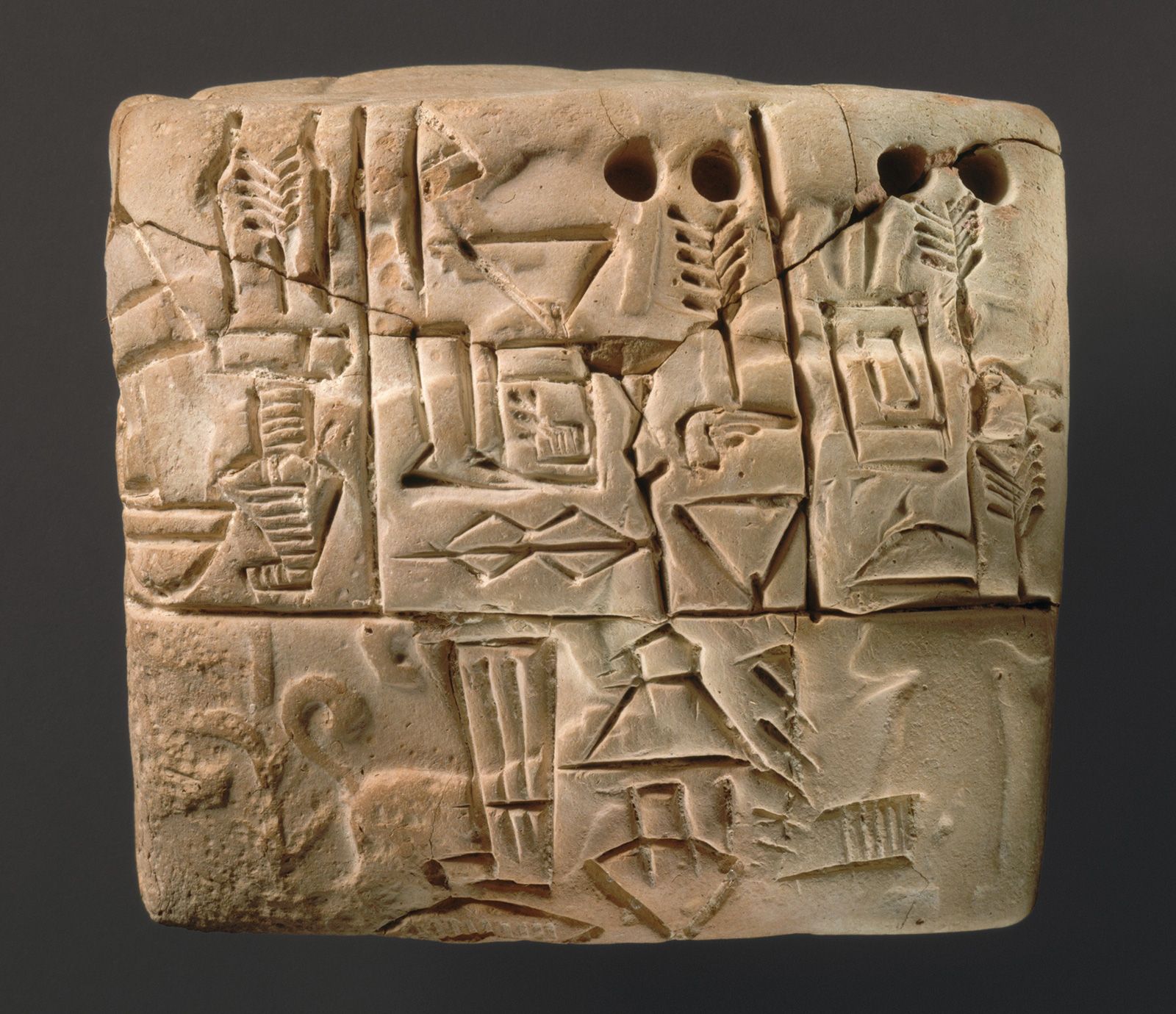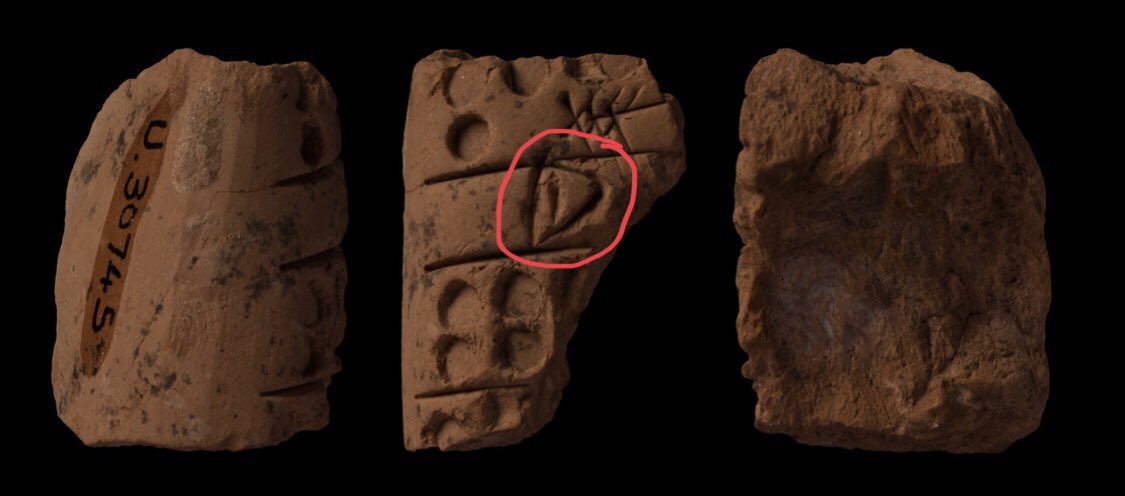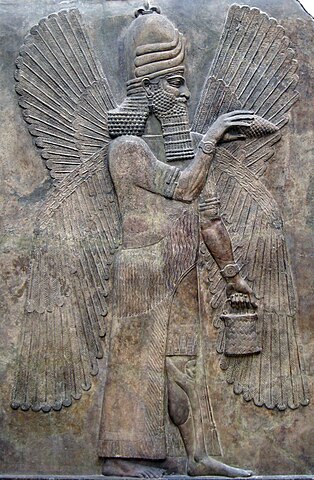What’s the best way to learn about an ancient civilization? There are many different answers to such a question, to the point where there really is no best way to get the job done. At most, there are a few ideal solutions that you can tackle over the others, and you can jump between one or the other to help with the monotony.
That said, monotony isn’t going to be a problem if you study ancient symbols—particularly when it comes to the Mesopotamian culture. Keep in mind that they were the ones who invented the concept of writing, which means their symbols are a peek into Mesopotamian culture as a whole. Ancient Mesopotamia isn’t so much a giant empire spanning thousands of years as it was a series of civilizations residing in the area, making it one of the more interesting civilizations to look into.
Cuneiform (In General)

It would be remiss to talk about symbols in Mesopotamian culture and not mention Sumerian cuneiform as a whole. To help put things into perspective about its impact on the world, this style of writing isn’t just one of the earliest—it’s the first. Yes, people did not use a proper system of writing until cuneiform was invented, which opened the doors for trading and the expansion of cities and cultures.
The impact of the first system of writing can never be understated, as so much of our culture depends on writing in general. Without writing, there’s no way human culture would have grown, and the fact that Mesopotamians also built the first city shows just how innovative and creative the Mesopotamians were. You could even say the Mesopotamians were an enlightened civilization, considering what they’ve accomplished.
The Symbol of Beer

Cuneiform has plenty of symbols we’ll be talking about throughout this list, but perhaps one of the most important is (probably) also one of the most amusing. The symbol above is the cuneiform symbol of beer, which the Mesopotamians made using barley, their number one crop. Considering barley was their most common crop, you can expect beer to be one of the most common drinks of that age.
To say the Mesopotamians drank beer was an understatement. The Mesopotamian civilization thrived off beer, and they practically lived off of the stuff. After all, not everyone had constant access to fresh water, which meant the Mesopotamian civilization used whatever they could to stay hydrated. I don’t think any of them would have complained, considering the popularity of beer today as well. Needless to say, beer was the most important drink in Mesopotamia.
Taurus—The Heavenly Bull

What’s your opinion on astrology? Most people associate it with the zodiac signs, which is a pseudoscience that claims specific events and information about human affairs can change based on the position of certain celestial objects. No matter how you might feel about astrology, there’s no denying that the constellations remain a tantalizing part of mankind’s culture. In fact, people have been looking into the constellations for insight for thousands of years.
The Mesopotamian culture was the first to dive into constellations, and the symbol above is known as the heavenly bull. These days, it’s associated with the constellation and zodiac sign Taurus. Even if you might not necessarily believe in the connection of the zodiac signs with how a person acts, the concept of constellations has existed for millennia.
The Cross (Garza)

The next symbol is one that everyone probably already knows, though the meaning tends to change depending on the culture. The Sumerian cross is one of the earliest and most popular symbols of the modern day, but most people have no idea that it has its roots in Mesopotamian culture. In the Sumerian language, the symbol is called Garza, which roughly translates to the scepter of the king. In this case, the king is known as the Mesopotamian sun or fire god.
One of the descriptions of the Mesopotamian god Ea describes him as being seated on a square. Sometimes, the square is described as a cross. This cross is his throne, and it’s said to represent the world. It’s likely the reason why it’s the four-armed cross, as it symbolizes the four corners of the world. It’s an interesting little tidbit showcasing Mesopotamian culture starting many of the trends today.
The Lamassu

The Egyptians weren’t the only ones fond of adding human and animal properties together to create mythical beings. In the case of Mesopotamian culture, the Lamassu are known to be guardians of the constellation/zodiac. They’re depicted as a combination of human and bull, with wings sprouting from its back. As far as the Lamassu’s prevalence as a symbol goes, they were engraved on tablets, which were then buried under houses—particularly the doorway.
The Lamassu was one of those mythological beings and symbols that became well-known throughout Mesopotamian cultures and timelines. The Akkadians and the Babylonians took a shine to the mythological being, and many used them as a symbol to help protect their homes. The Lamassu certainly cuts an imposing figure, which was probably why the Mesopotamians used them as guardians.
Lilith

Christianity has a habit of taking the culture of other civilizations and making them seem demonic or false simply due to being an entirely different culture. The symbol of Lilith stands for quite a few things these days, mainly due to her more popular depiction as a demon rather than a goddess. In Mesopotamian culture, she also represents the goddess Ishtar.
Perhaps the most interesting thing about Lilith is how everyone seems to have a different interpretation of her. The Mesopotamian interpretation is that of a goddess in the pantheon, and current interpretations mostly have her as the first wife of Adam in the Christian religion, and a demon.
The Sumerian Pentagram

As stated above, the most popular religions today have a habit of discrediting the symbology and cultures of older civilizations to prove that their religion stands unchallenged. Who here doesn’t know what the pentagram stands for? Some people associate it with Baphomet, which was a god but is currently seen as the symbol of Satan. Most people make claims that it has always been the lord of darkness, trying to lead people astray.
The ancient Mesopotamians certainly didn’t see things that way. In fact, the pentagram was just a symbol of a region that eventually grew into something more significant during the times of Babylon. Eventually, modern religions took the symbol and gave it various other meanings, though the most popular is to represent it as something demonic.
Ninda, the Symbol of Bread

As stated above, barley was the most popular crop in the time of the ancient Mesopotamians. With barley, the Mesopotamians produced beer, which was their primary drink. There was not as much access to water as there is today, and so they drank beer. Another cuneiform symbol that shares the limelight with the symbol of beer is undoubtedly ninda, the symbol of bread.
With barley, the Mesopotamians made two things: beer, and bread. With bread and beer, the Mesopotamians were able to gain the sustenance they needed as a foundation. With this foundation, they were able to accomplish everything else. While the Mesopotamian diet was much more varied, bread and beer were the most important.
The Winged Man

Long before the angels took to the skies with their depictions as winged celestial beings, there was the Mesopotamian winged man. It was one of the most popular symbols in ancient Mesopotamia, and would feature prominently in various works of art. It’s not easy to pinpoint the true meaning of the symbol, as the winged man was used in many different situations.
There are symbols of winged men in war, as well as peace. The winged man symbol was also used for the gods and goddesses of their pantheon, as well as their use as a symbol of protection. It was a relatively common symbol, as common as the angels themselves.
The Symbol of the Sky, and Anu

Last but certainly not least, we have the symbol of the sky, or heaven, in some cases. Sumerian cuneiform, despite being the first form of writing, was quite in-depth with their symbolism and meanings. It’s different from many modern writing styles as there’s quite a bit more to a symbol than meets the eye. In this case, the symbol also refers to Anu, who is often seen as the god of creation in ancient Mesopotamia.
Granted, there are many other gods that seem to have a similar placement on the pantheon, Anu is undoubtedly the god of the equatorial sky, and also known as the prime mover of creation. In most theological systems of gods and goddesses of the Mesopotamian pantheon, every celestial being gets their start through Anu. While he might not necessarily be the most popular of the gods and goddesses, his place in the pantheon cannot be understated.